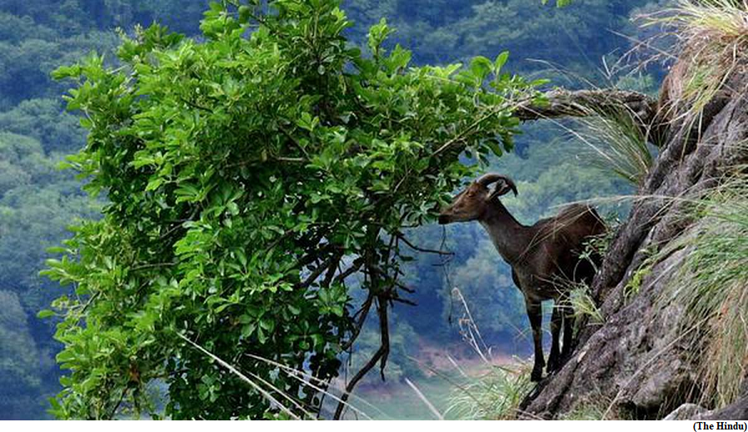DigiClaim for claim disbursal through National Crop Insurance Portal (NCIP) launched (GS Paper 3, Economy)

Why in news?
- Recently, the Union Minister of Agriculture & Farmers Welfare, launched National Crop Insurance Portal’s digitized claim settlement module namely DigiClaim under the ambit of Pradhan Mantri Fasal Bima Yojana (PMFBY) at Krishi Bhawan, New Delhi.
Details:
- With the launch of the module, claims will be disbursed electronically, which will benefit the respective farmers of six states.
- Now, the automated claim settlement process will be an ongoing activity to ease all insured farmers' lives and provide them with a sustainable financial flow and support.
- With the launch of a DigiClaim Module, insurance claims totaling Rs 1260.35 crore have been disbursed on March 23, 2023 to insured farmers in the states of Rajasthan, Uttar Pradesh, Himachal Pradesh, Chhattisgarh, Uttarakhand and Haryana with the click of a button, and the process will continue as and when the claims are released.
- Till date Rs 1.32 lakh crore claim amount has been disbursed to the insured farmers under PMFBY.
- The ongoing campaign ‘Meri Policy, Mere Haath’ has been monumental in enhancing the awareness around PMFBY at the grassroot levels.
How DigiClaim Module will help?
- In the current system, there have been several instances of insured farmers' claims being delayed due to a variety of factors. With the DigiClaim Module now farmers’ claims will be processed directly to their respective bank accounts in a transparent and accountable manner.
- This technology has been enabled through the integration of National Crop Insurance Portal (NCIP) and Public Finance Management System (PFMS).
- This would directly impact the claim reversal ratio, which is expected to go down with DigiClaim.
- Another noteworthy feature of this digital advancement is that farmers would be able to track the claim settlement process on their mobile phones in real-time and avail the scheme’s benefits.
Background:
- In the era of rapid innovations, Digitization and Technology are playing a significant role in scaling up the reach and operations of PMFBY with precision agriculture.
- In last few years, various innovative technologies have been piloted and integrated with the scheme to make the process of yield estimation and crop loss assessment more accurate, like Yes-Tech, WINDS and CROPIC.
- Further, for timely redressal of farmers' grievances, Farmer Grievance Portal has been launched in the first phase for the state of Chhattisgarh, which has received a plethora of positive response and in the second phase, it will be implemented in the entire country.
Way Forward:
- DigiClaim is yet another feather in PMFBY's cap in its ongoing effort to usher in advanced technological solutions such as automated calculation and disbursement of crop insurance claims.
India push for semiconductors
(GS Paper 3, Science and Tech)
Why in news?
- The Union Government has disbursed around ₹1,645 crore in performance-linked incentives (PLI) for electronics manufacturers so far, as part of its efforts to bring in more of the electronics supply chain to India.
- The push for semiconductors, or integrated circuits, is far more pressing now, as these chips are found in practically every modern electrical appliance and personal electronics devices.

Why is the government encouraging semiconductor manufacturing?
- Semiconductor fabrication units, or fabs, turn raw elements such as silicon into integrated circuits that are fit to be a part of practically all electronic hardware in the world. Fabs are highly capital-intensive undertakings, costing billions of dollars for large facilities.
- Semiconductor fabs of today may still be building circuits, but they require highly reliable and high-quality supply of water, electricity, and insulation from the elements, reflecting the high degree of precision, cost and capital needed to make the sophisticated circuits.
- Countries have spotted strategic value in cornering segments of the value chain for fabs, even as the sophistication and capital needed to run them have climbed to historic highs.
- China pulled ahead of Taiwan in 2022, in terms of share of global sales from fabs, according to a report by the Semiconductor Industry Association (SIA).
- The U.S. passed the CHIPS Act in August 2022, providing upwards of $280 billion in subsidies and investments to manufacturers opening fabs and making semiconductors in the U.S. This has been combined with restrictions on the Chinese semiconductor industry.
Are fabs opening in India?
- The government’s Invest India agency estimates that electronics manufacturing as a whole will be worth $300 billion by the financial year 2025–26.
- While facilities for assembling finished products have been steadily growing in number, fabs for making chipsets and displays, which are crucial parts of the manufacturing process for many electronics, are rarer.
Can semiconductors and finished products both be made in India?
- The SIA, which represents the bulk of semiconductor manufacturers in the U.S. and elsewhere, said in a report with APCO Worldwide in February that India should lean on its strength in the electronics manufacturing value chain.
- So-called “foundry companies”, which turn silicon into semiconductors, require investments upwards of 35% of revenues and entry costs run into billions of dollars.
- But companies that specialise in Outsourced Semiconductor Assembly and Test (OSAT) are less expensive to set up, and generate better margins.
- The OSAT set-ups take care of the less capital-intensive parts of chipmaking, such as assembling the precise components that have already been manufactured, and running specialised tests to approve them.
- A problem with many chip facilities in the traditional sense is that they tend to be captive units of large companies.
- While Foxconn’s assembly facilities are being touted as creating several jobs and inviting investment into India, some of its most valuable facilities globally are dedicated to building Apple devices, which account for a fraction of handsets sold in India.
What other advantage does India have?
- A large part of semiconductor manufacturing involves design and intellectual labour. India has an advantage here, as a large portion of semiconductor design engineers globally are either Indian or Indian-origin; chipmaking firms such as Intel and NVIDIA have large facilities in India that are flush with Indian talent working on design problems.
- This is an advantage as China is losing control over in the face of sanctions and an ageing population.
Will India’s semiconductor ambition be limited?
- The opening of display and semiconductor fabs is one of the strategic and economic goals of India’s electronics manufacturing incentive programmes, and breaking new ground on ambitious plans connected to popular brands such as Apple is something that the Union government and States are equally eager to accomplish.
- The government appears to be developing the parts of the ecosystem that have promise for sustainable growth and fiscal feasibility.
- At the Raisina Dialogue in March 2023 it was held that the electronics value chain would have to be an international undertaking among nations with common values to be effective.
Why is India CAMPA at odds with new IPCC report?
(GS Paper 3, Environment)
Why in news?
- A recent report that originates in the Synthesis Report of the Intergovernmental Panel on Climate Change (IPCC), a U.N. expert body, states that not degrading existing ecosystems in the first place will do more to lower the impact of the climate crisis than restoring ecosystems that have been destroyed.
- It is a finding that speaks to an increasingly contested policy in India that has allowed forests in one part of the country to be cut down and ‘replaced’ with those elsewhere.

Why is afforestation contested?
- India has committed to adding “an additional (cumulative) carbon sink of 2.5-3 GtCO2e through additional forest and tree cover by 2030”, as part of its climate commitments to the U.N.
- Afforestation is also codified in the Compensatory Afforestation Fund Management and Planning Authority (CAMPA), a body chaired by the environment minister.
- When forest land is diverted to non-forest use, such as building a dam or a mine, that land can longer provide its historical ecosystem services nor host biodiversity.
- According to the Forest (Conservation) Act, 1980, the project proponent that wishes to divert the land must identify land elsewhere to afforest, and pay for the land value and the afforestation exercise. That land will, thereafter, be stewarded by the forest department.
Why does CAMPA matter?
- The money paid sits in a fund overseen by the CAMPA. As of 2019, the fund had ₹47,000 crore.
- The CAMPA has come under fire for facilitating the destruction of natural ecosystems in exchange for forests to be set up in faraway places.
Why do natural ecosystems matter?
- Research has found that nature ecosystems sequester more carbon.
- Creating single-species plantations in, say, Haryana does not really come close to a natural sal forest lost to a development project in, say, Central Indian forests in terms of biodiversity, local livelihoods, hydrological services, and sequestered carbon.
- Of these, sequestered carbon recovers fastest under fast-growing plantations, but even then, it will take many decades before it approaches the level of carbon sequestered in a natural forest.
How do ecosystems compare to renewable energy?
- The IPCC report also found that the sole option (among those evaluated) with more mitigating potential than “reducing conversion of natural ecosystems” was solar power and that the third-highest was wind.
- But many solar parks in India have triggered conflicts with people living nearby because they limit land-use and increase local water consumption.
- A 2018 study also found that wind farms in the Western Ghats had reduced the “abundance and activity of predatory birds, which consequently increased the density of lizards”.
- However, the IPCC report also noted that “reducing conversion of natural ecosystems” could be more expensive than wind power, yet still less expensive than “ecosystem restoration, afforestation, and restoration”, for every GtCO2e.



![]()
